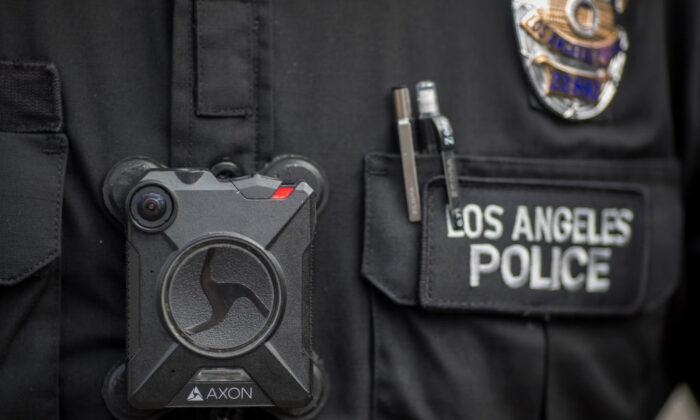LOS ANGELES—A Washington, D.C. man who was Tased multiple times by Los Angeles Police Department (LAPD) officers following a traffic collision in Venice on Jan. 3 died from the effects of an enlarged heart and cocaine use, according to the Los Angeles County Medical Examiner.
The results came from a Jan. 11 autopsy on 31-year-old Keenan Anderson and additional tests that were certified Thursday.
“Mr. Anderson was observed making erratic statements and appeared agitated,” the report said. “He soon fled on foot and was restrained by multiple officers who reportedly used wrist locks and hobbling techniques, and a CED [Taser]. External analysis of the discharged CED revealed probes were deployed without skin impact and that trigger activations were discharged to Mr. Anderson’s back.”
Anderson, a school teacher and cousin of Black Lives Matter co-founder Patrisse Cullors, was in the Los Angeles area visiting relatives during the Christmas season when he was involved in a traffic collision at Lincoln and Venice boulevards and reportedly tried to run away.

In January, Los Angeles Police Chief Michel Moore said a full investigation would be conducted with a special focus on the repeated use of the Taser.
“In my preliminary review of this incident, it’s unclear what the role of that Taser was,” Moore said. “As this investigation continues, however, I will pay close attention to the use of the Taser.”
Late Friday, Los Angeles Mayor Karen Bass again mourned Anderson’s death, noting that he was the father of a 5-year-old son and had been a teacher for more than eight years, most recently at the Digital Pioneers Academy, a charter school in Washington, D.C.
“My thoughts are with his friends and family as I know the release of this report will cause them and many Angelenos great pain as they still mourn this loss,” Bass said in a statement. “I remain committed to expanding the public safety system to include health professionals and to ensuring LAPD officers receive the best possible training to assist people in crisis.

Anderson’s family filed a $50 million damages claim against the city shortly after his death. The claim, a precursor to a lawsuit, alleges that police officers involved in the incident used excessive force and that the LAPD has a pattern of such against black men.
“If you Tase someone with 50,000 watts of electrical energy six times in the heart, is there really any wonder that moments later his heart would begin to flutter?” attorney Carl Douglas, who is representing Anderson’s family, said at a news conference after the claim was filed. “Is there really any wonder that moments later his heart would begin to beat erratically? And is there any wonder why four hours later his heart could no longer withstand the pressure from that Taser and gave out?”
When the officer arrived at Lincoln and Venice boulevards, Anderson was being evaluated for driving under the influence and was told several times to sit on the sidewalk, according to the video. Appearing to be restless, Anderson kept telling the officer someone was trying to kill him. The officer repeatedly asked him to “take some deep breaths for me.”
Later in the video, Anderson then kept getting up from the sidewalk and running away into traffic as additional officers arrived. Officers ultimately detained him, attempted to place him in handcuffs, hobbled him at his ankles, and tased him.
Soon afterward, the Los Angeles Police Protective League, the union that represents LAPD officers, issued a statement insisting Anderson escalated the confrontation with his behavior, which included running away from officers into traffic. The union also asked that an unedited version of the tape be released.
“Minor auto accidents are usually handled with an exchange of information between the drivers and a call to one’s insurance carrier,” the police union said. “On the other hand, when an individual who is high on cocaine is in an accident, tries to open the car door of an innocent driver, and then flees the scene by running into traffic, police officers must act.”
Union director and LAPD Detective Jamie McBride told The Epoch Times in January that the main officer involved in the incident did an “absolutely fantastic job” trying to de-escalate the situation according to LAPD’s training.
He said officers attempted to detain Anderson because of his involvement in the traffic collision, but Anderson’s resistance warranted the use of a taser to gain compliance.
“The normal person is going to abide by the officer’s direction,” McBride said. “When the individual doesn’t go by what the officer is asking … the officer [is going] to question, ‘Why is he not doing it?’”





